Faq
Day Old Kuroiler (Giriraj) Chicks are newly hatched poultry that are ideal for both meat and egg production. They are known for their robustness and adaptability, making them suitable for various farming conditions.
For Day Old Kuroiler (Giriraj) Chicks, set up a clean, warm brooder with a temperature of around 32°C for the first week. Ensure good ventilation, provide adequate space, and use bedding that is easy to clean.
Feed Day Old Kuroiler (Giriraj) Chicks a high-quality starter feed specially formulated for young poultry. This feed should be rich in proteins, vitamins, and minerals to support their early growth and development.
Day Old Kuroiler (Giriraj) Chicks should follow a vaccination schedule starting from a young age. Common vaccinations include those for Newcastle disease, Marek’s disease, and infectious bursal disease. Consult a poultry health expert for a specific vaccination plan.
Common health issues include respiratory infections, coccidiosis, and digestive problems. Monitor for signs such as lethargy, poor growth, or abnormal droppings and seek veterinary assistance if any health issues arise.
Day Old Kuroiler (Giriraj) Chicks generally mature in about 18-20 weeks. They are raised for meat or egg production, with their growth rate being relatively fast compared to other breeds.
Isolate any sick or weak chicks immediately to prevent the spread of disease. Ensure they have access to clean water and high-quality feed, and consult a veterinarian for diagnosis and treatment.
Yes, Day Old Kuroiler (Giriraj) Chicks can be successfully raised in a backyard setting if provided with proper housing, nutrition, and care. Ensure they have adequate space and protection from predators.
Handle Day Old Kuroiler (Giriraj) Chicks gently and avoid excessive handling to reduce stress. Ensure that their environment is clean and free from disturbances.
The feed conversion ratio (FCR) for Day Old Kuroiler (Giriraj) Chicks typically ranges between 2.5 to 3.0. This means that for every 2.5 to 3 kg of feed, the chicks will gain 1 kg of body weight. Efficient feeding practices help optimize growth and reduce costs.


